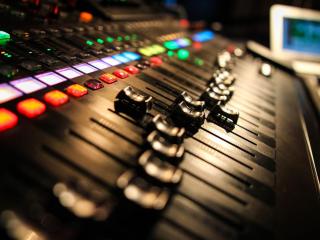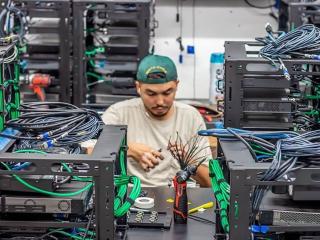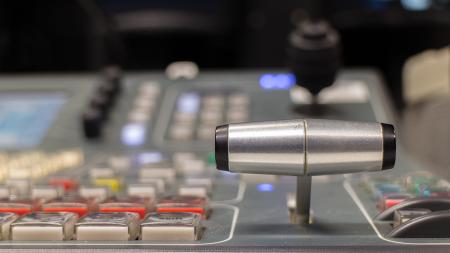
Video production typically incorporates a large number of team members in order to get everything right. This team must handle all aspects of video production including pre-production, production, and post-production. From writing the script to the final edit, the video production team does it all. Creating a video, especially a full-length movie, can take a lot of time, and has a lot of different tasks involved in the process. This article will not be a comprehensive list of all positions, but it will cover the major positions that have the most impact on the video production process, including:
- Screenwriter
- Producer
- Director
- Cinematographer
- Lighting Director
- Key Grip
- Audio Technician
- Production Assistant
- Editor
Screenwriter
The screenwriter(s) play a critical role in the video production process. The dialogue must be crisp and sharp, and it must match the personality of the on-screen character.
The screenwriter must work with the producer and director in order to ensure that all locations in the script will be accessible to the movie crew for the shooting. This can result in many revisions and changes before the final script is finished. A good script will have clear dialogue that appears natural, as well as smooth transitions from one scene to the next.
Screenwriters may not get the acclaim they deserve, but their job is one of the most integral parts of the video production process. A good or bad screenwriter can make or break a video.
Producer
The producer is the main character on the video production process. Once a producer has been hired, his first order of business is to find a competent director to handle the directing responsibilities. Then he works with the director to hire the rest of the crew members.
The producer is involved in the entire video production process. He manages:
- All aspects of the production from the screenwriting to the final edit.
- Production to ensure that budget requirements are met.
- Organizing shootings at specific locations, determining which actors will be needed at those locations, and managing the travel arrangements for those actors.
Director
The director is the main person involved in video production on the set. Even off the set, the director has a huge impact, as they assist with recruiting actors and actresses, as well as working with the producer to ensure that everyone is doing their job correctly.
On the set, the director is the king. He directs every aspect of the shooting process, including:
- Lights and camera positioning
- Actor dialogue
- Determining if each scene that is shot can be used in the film, or if it needs to be retaken. (Typically, each scene requires several takes. Some scenes take over 100 retakes to get it right!)
The director typically has at least one assistant, who helps with actors, props, cameras, and more. There is a title for the top assistant, the First Assistant Director. This job mainly consists of scheduling on the set. Other than that, it consists of typical assisting duties.
Cinematographer
The cinematographer is known by several different names including the director of photography and camera operator. On large films, there may be different people for each of these titles, but many times they are the same person. The cinematographer handles lighting, unless the producer has hired a lighting director. In those cases, the cinematographer and the lighting director work together to ensure that lighting is sufficient for each scene.
The director outlines each scene to the cinematographer, and the cinematographer must then create the atmosphere to attain the director's wishes. He utilizes literally everything that works to make the scenes come to life, including:
- Camera positioning
- Lighting
- Specific lenses and filters
- Rig
- Props
The cinematographer typically has assistant camera-people as well to help with the filming. This allows the scene to be shot from several different angles simultaneously. An editor will examine the footage during the post-production process, and, along with the director, will determine which angles will be used.
Lighting Director
The lighting director, also known as a gaffer, handles all aspects of the lighting. The lighting director must work closely with the cinematographer and the director to ensure that the best possible lighting is being used. This may consist of:
- Natural lighting (sunlight)
- Three-point lighting
- A combination of both
The lighting director typically has at least one assistant, known as a key grip, or he may use production assistants to help.
Key Grip
The key grip is the lighting director's right-hand man. The key grip ensures that all lighting is placed correctly, and helps set up flags and diffusion. They also make sure that no objects or people are blocking any part of the lighting, and that there are no shadows being cast. They will use three-point lighting to ensure that all areas of the set are well-lit, and that there are no dark spots or shadows.
Audio Technician
The audio technician, sometimes known as audio director, is the person who manages all aspects of the audio recording process. They must manage the audio levels, as well as maintain clarity and distortion levels in order to have crisp audio without background noise. Audio techs typically work directly with the director and the director of photography for each scene. Audio techs may have their own assistant(s), although in many cases they will use a production assistant to help rig the audio.
Production Assistant
This position is the low man on the totem pole, so to speak. This is the person who goes out to get lunch for everyone, picks up equipment, assists camera and lighting techs, and does anything else that needs to be done. It is important to note that this role, although “low on the totem pole,” is absolutely vital to the production process. Without him/her, the film can take longer to film, go over budget, and often affect overall filming quality. This person is truthfully in charge of making sure everyone has what they need, when they need it, and where they need it.
Editor
While the editor is mainly involved in the post-production process, his/her tasks begin as soon as shooting starts. The editor must assemble all footage, then arrange the scenes, and merge them into a continuous sequence.
The editor, director and producer work together to ensure that the final product is satisfactory. This part of the video production process is typically very lengthy, and consists of many revisions and editing. If there are issues with any scenes that editing cannot fix, they have to be reshot. Once all of the scenes have been successfully merged, the final product can be viewed and released.



